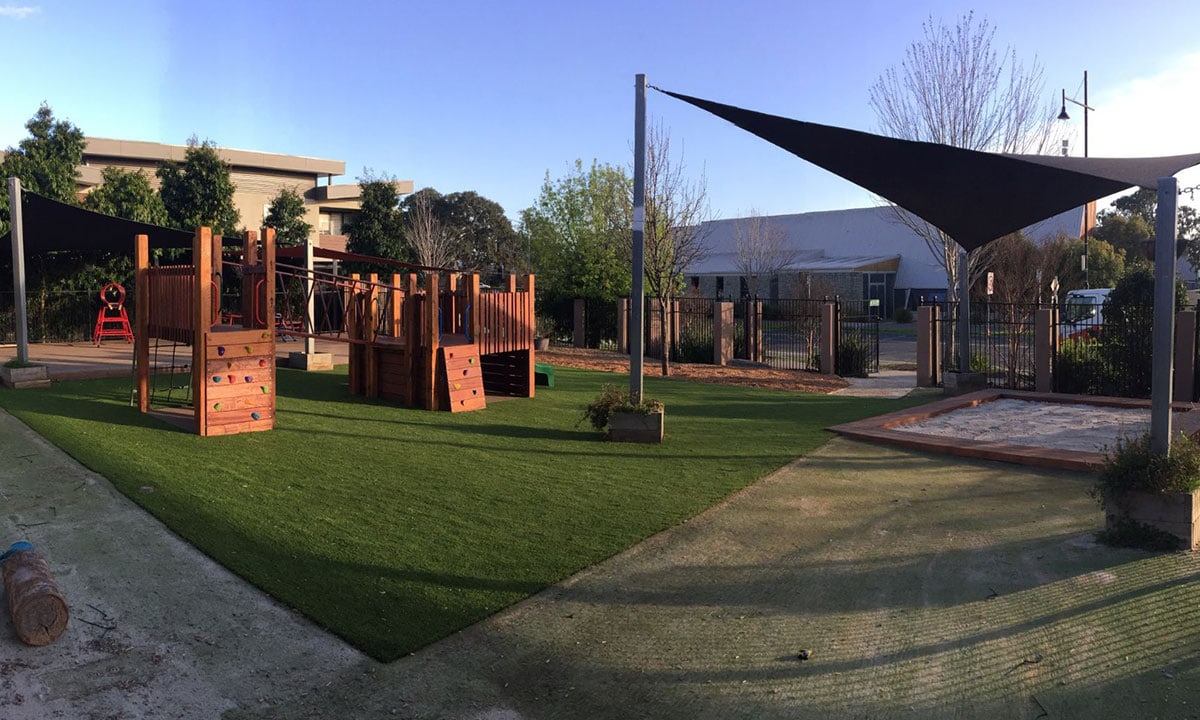As a child, do you remember building a fort or cubby house out of lounge cushions, pillows and blankets or making a secret cave out of branches and leaves? Remember how great it was to have your own secret space with your own made-up rules?
Let’s be honest, doesn’t every child (and adult) want a tree house or a fort in their backyard – a place to escape, to imagine and to dream…
It’s a dream come true for the children at Mernda Early Learning Centre who are delighting in their brand-new fort and sandpits as part of the recent playground upgrade.
But, why are forts so great?
Through David Sobel, a trailblazing environmental educator, his research shows that children are playing less outdoors because they are online more and as a result, younger children are less likely to copy fort playing alongside older children. All kinds of play, including hide and seek, tag, freeze etc., get passed from generation to generation and this is happening much less.
Building cubby houses and forts typically starts in preschool-age children where they can be observed making pillow fortresses or constructing hidey-places using building blocks. Developmentally, lots of things are happening during this type of play:
- Discovering their world: Children are learning how all the pieces of their lives fit together – landscapes, roads, communities and home – and their place in all of it.
- Learning independence – children are learning how to separate themselves from their little worlds which are defined by their family and their parents. They crave their own separate space.
Along with these developmental needs, there are a ton of other benefits to playing in forts and mostly because it’s just plain fun!
Children learn:
- Maturity, independence, and confidence
- Cognitive skills, like problem solving, planning, and imagination
- Social skills, like cooperating and negotiating
- Building and construction
- A love of the outdoors, and learning about the natural world
As parents and caregivers, we can help support children in their quest to seek out their own space – and you don’t need to wait until they reach preschool age. In supported and meaningful ways, small children love playing hide and seek, building and tearing down structures, reading stories in teepees or in quiet spaces under canopies.
Here are some practical things you can do to help kickstart things at home:
- Introduce cubby houses early using blankets and pillows.Typically fort play starts indoors before moving outdoors and then further and further out as kids grow.
- Make sure children have lots of room to explore the natural world.
- For older children, consider formal fort play which could include helping to construct a real fort or tree house at home.
- Private – keep out!Allow children to play freely but stay close enough to make sure children are well supervised and are kept safe.
Resource: Children’s Special Places: Exploring the Role of Forts, Dens, and Bush Houses in Middle Childhood (Landscapes of Childhood Series) by David Sobel
Located at 5 Bent Street, Mernda, Early Learning Centre, Mernda welcomes families from suburbs including Mernda, Doreen, South Morang and Epping.
For enrollment enquiries, please contact Bianca at Ph: 03 9715 2199 or Email: [email protected]


